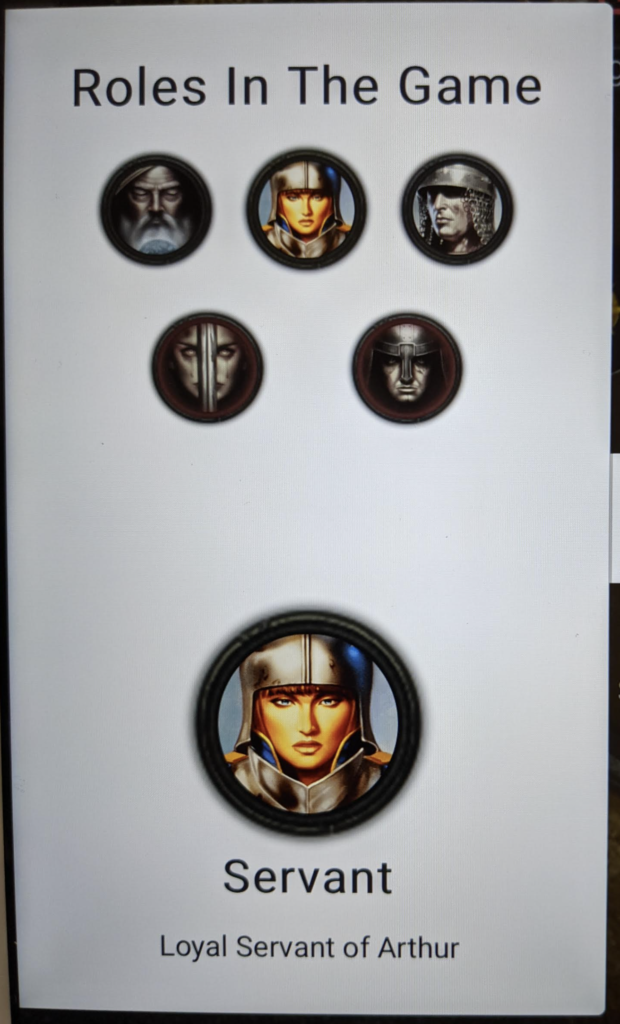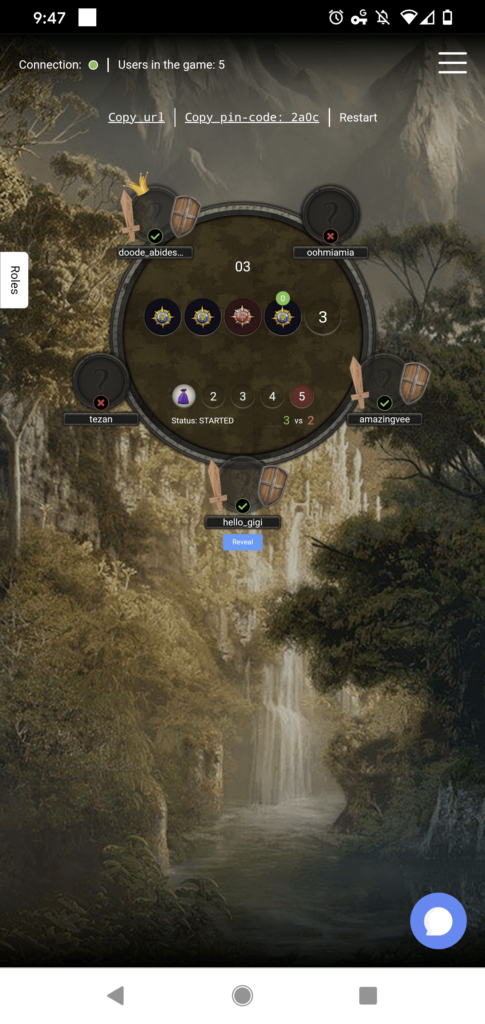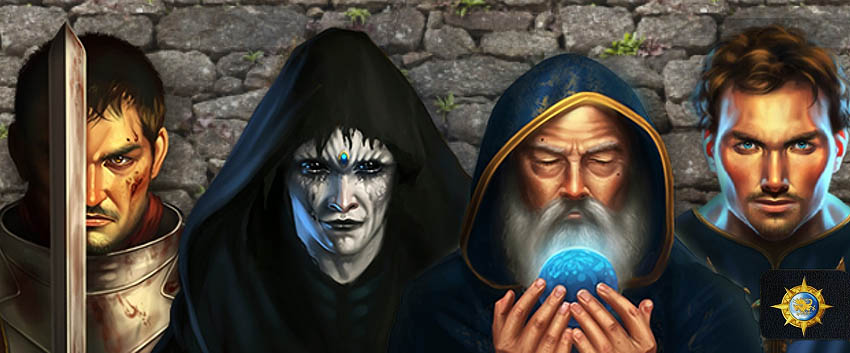This week, I played an online adaptation of the board game called The Resistance: Avalon. It is essentially a game of hidden loyalty (also known as social deduction) between 5-10 players. It is a spin on the classic battle between good and evil to control the future of civilization. The theme of the game is centered on the Arthurian legend. The forces of good are portrayed by the “Loyal Servants of Arthur” including classic figures like Merlin, a wizard that is able to detect the identities of evil forces. Evil forces are led by Mordred and his unscrupulous minions, including an assassin that aims to execute Merlin.

Formal Elements
Players: Multilateral competition between 5-10 players on two teams: good and evil.
Objectives: To control the future of civilization by winning three out of five quests for your team. The “Good team” triumphs by successfully completing three quests. The “Evil team” wins if three quests end in failure.
Rules: Identities are secret except for players with special abilities (e.g., Merlin can see who’s on the evil team). Evil can also win by assassinating Merlin at the end of the game. While bad people can play Success or Fail, good people can only play Success.
Procedures: The Leader (with the crown token) will pick players to go on the first mission. The number of people on the missions will vary based on the number of people involved. In our game, of 5 people, we had 2 players go on missions. Then, everyone must vote on whether they want the chosen people to go on the mission. Finally, players on the mission select a Success or Fail outcome of the mission. If there’s a Fail card, the mission it considered a failure. This concludes the round and it repeated 5 times or until a team wins 3 times.
Boundaries: The “board” and emotional space between players.
Resources: Board, Identity cards, Vote markers, mission cards, leader/crown token.
Outcomes: Producing a winner by winning 3 missions and/or by assassinating or failing to assassinate Merlin.

Types of fun:
Fellowship: The game promises fun in terms of “discussion, deception, accusation, and logical deduction” as outlined in the official rules of the game. In other words, it promises fun through fellowship with your team and the challenge of winning quests. The elements that contribute to this type of fun is that there are two teams and that everyone has secret identities. The rounds are also relatively short, which sets up the game to be played multiple times for maximum group enjoyment.
Challenge: There is certainly mystery and intrigue for the “Good team” around who else is on their side and which evil players to avoid. This creates challenge in the game, in terms of identifying who you can and can’t trust. Since the “Evil team” knows the identities of other evil players, they can focus their energies on sabotaging quests and identifying who might be playing Merlin. An added layer of challenge comes in being the leader and strategically deciding which players to send on a mission for their intended outcome. In the beginning, there is a solid element of chance in terms of picking the first players to embark on a mission without any clue in terms of previous playing history.
Theme & Abuse
The arthurian theme is reinforced through graphic design throughout the game. For example, beyond the roles and character names, the background of the online game displays a mythical forest which helps set the scene for the imaginary quest. The iconography also supports the theme, through demarcations with crowns, swords, and a purple bag of money for the vote markers.
Abuse is also better handled online than it perhaps would in person while playing the board game version. For example, in the board game version, players are instructed to close their eyes and only open if they are on the evil team. Then the evil team puts out their hand with their thumbs up and closes their eyes while Merlin opens his eyes to see the identities of the evil team. Though I have never played in person, I imagine that it might be tempting to cheat and sneak a peek to see who might be evil, or to listen intently for movement to give away cues and hints on who might be who. In the online version, this is all mediated by the user interface. There is a reveal button that you can flip to see your character and role and then it automatically hides, to protect your identity from wandering eyes. In this way, the online game helps to minimize potential for abuse.
Opportunities for Improvement
The experience of this game can be improved for first time players. For example, it was difficult to decipher the board and it would have helped to have guidance on what the different elements meant. We also spent a significant amount of time summarizing previous plays. It would have helped to have a log of player activity visible to all players. Lastly, it would be more fun in terms of challenge if the success/failure cards were anonymized within the chosen players on the mission. In other words, you would know that someone selected failure and another selected success, but you would not know which player selected each outcome. This way, the sense of intrigue would last longer into the game.



